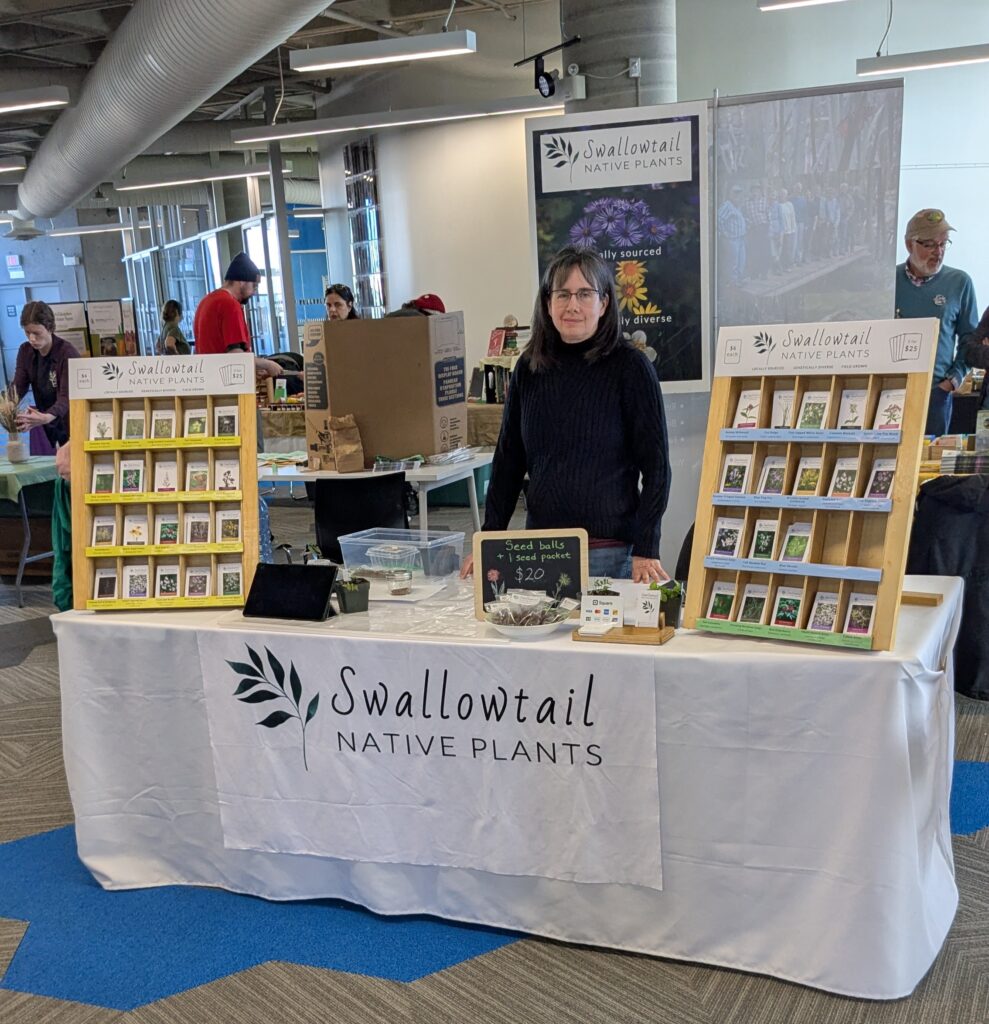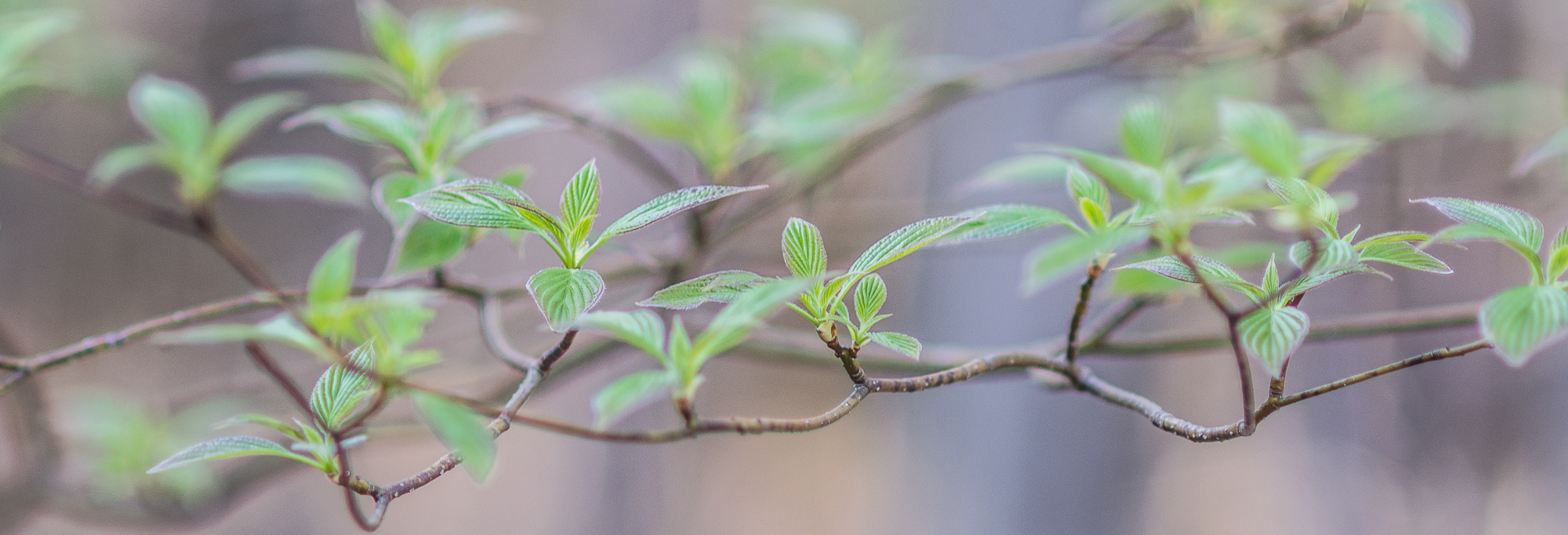
Dear Reader,
In this newsletter I try to answer the question: “What should I be doing right now with my native seeds?” And each month I am faced with the unsatisfactory answer: “It depends.” It depends on what you have already done with your native seeds and what you hope to do with them in the future. It depends on what sort of gardener you are and the supplies and equipment you have. It also depends on which species you are trying to grow.
This month I will take you on a tour of some of the seeds that I have sown to give you an idea of the options available to you. Then you can choose your own native seed adventure!
Direct Seeding
The first seeds we will visit are New England Aster (Symphyotrichum novae-angliae) seeds. In mid-December I sowed them in the garden directly on top of the soil when the snow melted. (“Why is it on top of the soil?” you might ask. Last year I tested seed germination under a variety of conditions and discovered that many of the aster and goldenrod species germinate better when they are exposed to light.) (“Why mid-December?” you might ask. There is a large window of time between late November and early February when you can direct sow your seeds and they will have a long enough cold period.)

These New England Aster seeds are currently buried under February snow, fulfilling their requirement for winter conditions. I sowed a lot of seeds, hopefully the rodents will not eat all of them. It turns out that it is hard to take a photo of seeds buried under snow. I think those are deer tracks through one of our production beds.
In the spring my future self will need to thin the plants, and weed and mulch the beds.
Seed Balls
Tall Thimbleweed (Anemone virginiana) seeds are next on our tour. They are part of my seed ball trial. These seeds are on the surface of a seed ball that I placed on top of the soil in the production beds. Like New England Aster, Tall Thimbleweed needs light to germinate. The seed ball used less seed and was easier to plant in the beds. Perhaps the seed ball will provide some protection from the mice? The Tall Anemone seeds are buried under the snow and are enjoying winter.
My future self will need to weed and mulch these beds in the spring, but the plants will be properly spaced.

Winter Sowing
Now we will visit some Swamp Milkweed seeds (Asclepias incarnata). In early December I sowed them in a clear, ventilated container and put it outside (winter sowing). I had to dig through a snowbank and open one of the boxes to take this photo.

Last year I found that my milkweed seeds germinated much better when they were winter sown than when they were stratified in the fridge. I suspect that milkweed seeds need a freeze/thaw cycle to break their seed coat. These seeds are frozen and the hungry mice are thwarted by the box.
In the spring I will need to transplant the seedlings into larger pots and then plant them into the garden. More work for my future self than the direct seeding or seed ball method. But perhaps more seedlings? We will see in the spring.
Last year was my first attempt at winter sowing. I made one of these boxes and put twelve different species inside. I was so pleased with the results that this year I have seven boxes with a total of 84 species.
Stratification in the Fridge
Our fourth species is Black-Eyed Susan (Rudbeckia hirta). In early December I put the seeds in a ziploc bag with damp vermiculite and put it in my fridge. The Black-eyed Susan seeds were fooled by the cold temperatures of the fridge and thought it was winter. Today I will take the bag out of the fridge and spread the seed-vermiculite mixture on top of pots filled with potting soil. Then I will place the pots under lights. These seeds need lots of hands-on care from me all winter. I need to water them, thin them and eventually plant them into the garden in the spring. This method is a lot of work, and requires a shelf with grow lights, but produces larger seedlings earlier in the season.

No Cold Treatment Needed

The last seeds we will visit are Red Columbine (Aquilegia canadensis). They are still in their seed packet. Red Columbine seeds do not need a period of cold in order to germinate. I can sow them now and grow them under lights all winter, or I can just wait until spring and sow them directly in the garden. Or I can do both.
If you haven’t sown your native seeds yet there is still time. You can use any (or all!) of the above methods to sow your seeds. Check the germination codes to see if your species needs light (L) or cold (C 60 days) in order to germinate.
We have over thirty species of locally sourced, genetically diverse, field grown native seeds that are dreaming of a home in your garden!
Cheers!
Andrea D’Silva – owner
Swallowtail Native Plants
Seedy Saturday/Sunday Event
We had our first Seedy Saturday in Hamilton on February 1st. It was a great success! Drop by our other Seedy Saturday/Sunday events if you are in the area!
Sunday, March 9th: Peterborough
11 am to 3 pm
Peterborough Square Mall, 340 George St. N, Peterborough, ON
10 am to 2 pm
Innisfil ideaLAB and Library, 967 Innisfil Beach Rd, Innisfil, ON


